Lemon Balm (Melissa officinalis)
Exploring the many gifts offered by Lemon Balm the in the context of Food Forest Design. This is Installment #11 of the Stacking Functions in the Garden, Food Forest and Medicine Cabinet series.
This post serves as the 11th installment of the (Stacking Functions in the Garden, Food Forest and Medicine Cabinet : The Regenerative Way From Seed To Apothecary series).
As promised, here is an in depth article on Lemon Balm!
I love this plant as it is very easy to grow (in fact, it now grows itself in our garden without any assistance) it provides forage for native pollinators while repelling mosquitoes and provides a long list of medicinal benefits.
Lemon balm’s pain-relieving properties may make it an ideal choice for relieving muscle and toothache pain. In addition to drawing on its relaxing properties, this home remedy targets inflammation in the body.
The leaves of lemon balm contain potent astringent and antibacterial properties useful for many things including cleansing wounds and pores to reduce blackheads. Due to rosmarinic acid, one of lemon balm's key antioxidant ingredients, the herb also benefits the complexion.
On top of all that, this herb is versatile in a culinary sense (providing fresh and enlivening flavors and aromas that lend themselves to enhancing creations in the kitchen).
Family: Lamiaceae (Mint family)
Part used for medicine/food: Leaves and flowers
Constituents: flavonoids (luteolin-7-O-glucoside, isoquercitrin, apigenin-7-O-lucoside, and rhamnocitrin), rosmarinic acid, ferulic acid, caffeic acid, methyl carnosoate, hydroxycinnamic acid, and 2(3’,4’-dihydroxyphenyl_-1,3-benzodioxole-5-aldehyde. The essential oil of Lemon Balm contains the aldehydes geranial, citronellal, beta-caryophyllene, neral, and geranyl acetate.
Medicinal actions: Nervine, Sedative, Mild Antidepressant, Antispasmodic, Carminative, Lemon balm is a relaxing diaphoretic as opposed to a stimulating diaphoretic. Antiviral and Antioxidant.
Pharmacology:
Anti-viral properties are mainly due to the oxidation products of caffeic acid and its derivatives.
Volatile oils citral, citronellal, citronellol, geraniol are anti-septic, antispasmodic, and calming to the nervous system.
Flavonoids & polyphenols may be responsible for inhibiting TSH and auto-antibodies from binding on TSH receptors (though it is not clear if decreases thyroid activity).
Cold Hardiness: 3-10
Native Range: Melissa officinalis is native to Europe, central Asia and Iran, but is now naturalized around the world. Even in the extreme north this plant would be worth growing as an annual.
Growth Form: The plants grow about two feet tall, with branching stems. The oval or heart-shaped, slightly toothed leaves are held tightly in pairs at each stem joint. The white tiny flowers are fairly inconspicuous.
Reproduction: The species is hermaphrodite (has both male and female organs) and is pollinated by Bees.
Habitat and Ecological Niche:
Lemon balm is an aromatic mint that spreads easily and feeds many pollinators. It is a fantastic understory plant in forest gardens.
Flowering and Pollination: It is in flower from June to October, and the seeds ripen from August to October. I have noticed that solitary bees such as mason bees and leaf cutter bees like to visit the blossom on our plants. Typically now found growing feral in Anthropogenic (man-made or disturbed habitats), meadows and fields.
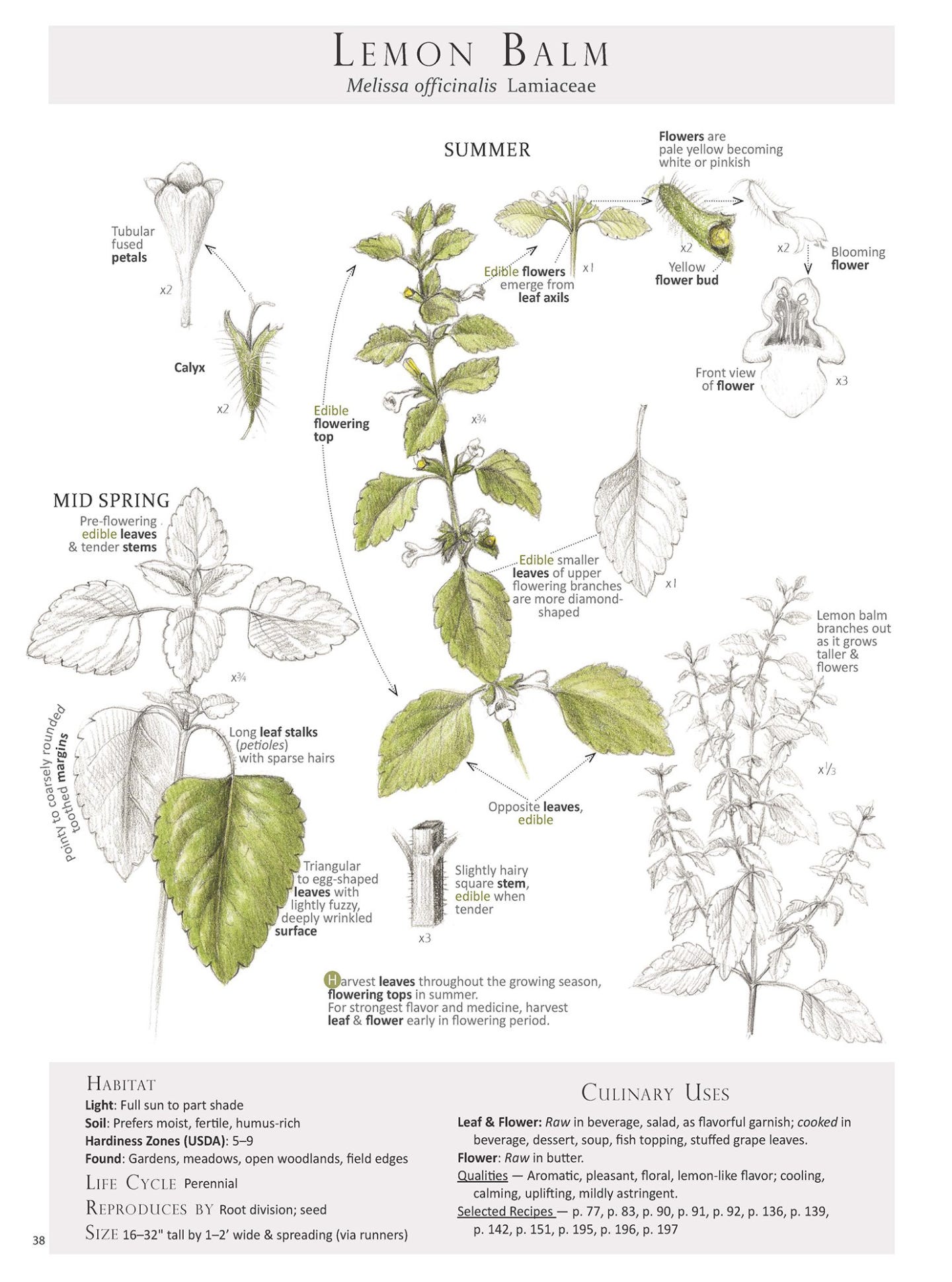
Health Benefits of Lemon Balm:
1. Protects Against Heart and Liver Problems
Studies found that Lemon balm has the ability to protect the heart and liver, in part by lowering high triglycerides and improving cholesterol synthesis in the liver. The same 2012 study that discovered these results also revealed that inhaling lemon balm oil reduces some of the factors that lead to perpetual growth of a common liver cancer cell.
Another heart-related benefit of lemon balm may be its ability to protect the heart muscles from injuries. Researchers gave an oral extract of the plant to animals in a 2016 study and found it resulted in a reduction of heart rate and blood pressure — plus they found indications of resistance to heart injury in lower doses.
Traditional Iranian medicine has used it as a therapy for some time to treat heart palpitations, and science seems to back up this use. It may have a positive impact on the mechanics and electrical impulses of the heart, giving it power to help regulate heart arrhythmias, aka irregular heartbeat.
Melissa officinalis has been shown in certain rat studies to reduce the occurrence of premature beats, tachycardia and fibrillation within the heart, all without causing any negative side effects.
In one trial using an orally administered extract of lemon balm leaf, subjects seemed to experience a significant drop in benign heart palpitation episodes, which is believed to be tied to its ability to enhance one’s mood.
2. Functions as a Natural Antibacterial Agent
There’s some evidence that lemon balm products, including kombucha (a fermented drink that contains probiotics), have antibacterial qualities that may help naturally fight infectious bacteria.
Lemon balm oil specifically shows a high level of antibacterial and antimicrobial activity against candida. This is a common yeast infection that causes a number of candida symptoms, including exhaustion, brain fog, digestive problems and a weakened immune system.
3. Useful Against Diabetes
Researchers have tested both lemon balm essential oil and extract for their effects on high blood sugar. Both produce similar results by reducing blood sugar levels and oxidative stress related to diabetes in mice.
In fact, researchers at the Free University of Berlin stated, “ethanolic lemon balm extract can potentially be used to prevent or concomitantly treat type 2 diabetes,” because they were so impressed by the convincing data on the mice subjects.
Does lemon balm work for weight loss? Because it has anti-inflammatory effects, can help you cope with stress, improves digestion and supports metabolic health, it may be useful for maintaining a healthy weight.
It’s a not a magic bullet, but help with weight loss might be a potential secondary effect.
4. Diminishes Anxiety and Improves Mood and Sleep
Traditionally, lemon balm herbal preparations have been used to treat anxiety and insomnia. Its mild sedative effect is a well-known feature.
These claims seem to stand up to scientific scrutiny, as well as extend beyond treating general anxiety.
Taken internally in food products, it also seemed to enhance mood and/or cognitive performance, as demonstrated in a study involving young adults.
When used as an herbal sleep aid, it seems to help reduce insomnia symptoms and sleep disorders, including during menopause when symptoms such as anxiety, hot flashes and restlessness are very commonplace.
The gentle, relaxing effects produced by rising GABA levels in the brain after Lemon Balm supplementation can help ease the mind and relax the body. Lemon Balm increases GABA levels in the brain by primarily blocking one of the main enzymes responsible for breaking down GABA. This enzyme is called GABA transaminase and blocking it results in a gentle yet robust increase in GABA levels. Due to its somewhat gentle effects, Lemon Balm benefits those who do not want to get "knocked out" before bed, but rather those who want to feel relaxed enough to facilitate natural sleep processes.
For this reason I like to create a “nighttime” elderberry syrup infused with things like lemon balm and tulsi.
5. Treats Herpes Naturally
Lemon balm uses also extend into topical application, due in part to the herb’s antiviral qualities. Specifically, when applied directly to the skin, it is a useful herbal remedy to help treat the herpes virus.
While there is no permanent cure for herpes, treatment methods generally involve finding ways to decrease the frequency and duration of outbreaks. To date, most researchers have studied the efficacy of lemon balm on herpes labialis, or cold sores.
When using lemon balm extract in cream form, research shows that the intervals between herpes breakouts become longer, the healing period shortens and the symptoms, such as itching and burning, seem to decrease. Interestingly, because of the way that lemon balm works to achieve this, studies point to no risk of a resistance to the herpes virus forming after repeated uses.
The same results seem to exist when using lemon balm essential oil, too.
According to various sources, it seems lemon balm’s effects on the herpes simplex virus are related to its antioxidant compounds. These include tannins and polyphenols.
There are no well-known side effects when using this substance, either topically or orally.
6. Powerful Antioxidant and Anti-Inflammatory
This herb can help fight free radical damage in ways that may prove to be remarkable in natural medicine.
Perhaps most notably in this particular benefit of lemon balm is its potential impact against a specific kind of cancer known as glioblastoma multiforme. This fast-spreading cancer usually begins in the brain and has no known effective treatments.
However, a 2014 study found that lemon balm essential oil caused apoptosis (spontaneous cell death) in these cancer cells and stopped the expression of a protein known as multidrug resistance associated protein 1 (MRP1). This is especially important considering that MRP1 is partly responsible for the drug resistance cancers develop to traditional treatment methods, such as chemotherapy.
Other studies have found lemon balm products to have apoptotic effects on other cancer cell lines, including a type of cancer affecting the organ lining separating the organ from the rest of the body, MCF-7 (a breast cancer cell line), a colorectal cancer cell line, the most common liver cancer cell and two different types of leukemia cells.
In one study looking at how the antioxidants in lemon balm affect oxidative stress caused by low levels of radiation, lemon balm had remarkable results, including a significant improvement in blood levels of other cells. A study that looked at supplementing the diet of medical professionals consistently exposed to low levels of radiation with lemon balm showed that it may be an effective way to protect them against unhealthy levels of oxidative stress.
The study also showed lemon balm could naturally regulate a very important substance called superoxide dismutase. This enzyme, known in short as SOD, is vital to understand in terms of oxidative stress because the naturally occurring SOD can cause a number of different types of cell damage.
However, it is possible to regulate it naturally, using substances such as lemon balm that keep it in check.
Lemon balm may also protect against neurodegenerative disorders caused by overexposure to manganese, according to some animal research.
In addition to providing antioxidant support, it has the potential to act as an anti-inflammatory agent. Reducing chronic inflammation helps protect against disease and relieve pain.
7. Regulates Overactive Thyroid
Thyroid conditions affect a decent portion of the population of the United States, and one of the two common thyroid conditions, hyperthyroidism, can benefit from lemon balm.
Extract of lemon balm is one of the treatment methods that natural health practitioners tend to use when attempting to regulate overactive thyroid. Research suggests that these extracts stop the components that over-activate the thyroid from binding with the thyroid receptor, specifically in patients with Grave’s disease.
8. Aids in Digestion
Because of its antioxidant activity, this extract has a potentially protective effect on the gastrointestinal system. One way it can help soothe digestive issues is by preventing gastric ulcers, as shown on rats, although this has not been studied at length yet.
There is also some evidence that lemon balm products, as well as peppermint and angelica root, may be useful in creating herbal remedies for constipation. For example, lemon balm tea benefits seem to include fighting abdominal pain and discomfort after eating, constipation, and bloating.
This may in part be due to the tea’s calming effects on the nervous system.
9. Naturally Soothes Pain
According to a 2015 study, lemon balm (taken in capsule form) effectively reduced PMS symptoms in high school-aged women.
If you have a toothache, apply a small amount of lemon balm oil to the painful area. You can also inhale the oil or tab it on your temples and neck to help fight headaches.
10. Offers a range of health benefits to the skin when applied topically
Lemon balm’s pain-relieving properties may make it an ideal choice for relieving muscle and toothache pain. In addition to drawing on its relaxing properties, this home remedy targets inflammation in the body.
The leaves of lemon balm contain potent astringent and antibacterial properties useful for many things including cleansing wounds and pores to reduce blackheads. Due to rosmarinic acid, one of lemon balm's key antioxidant ingredients, the herb also benefits the complexion.
Lemon Balm also has the ability to speed up a process called melanogenesis, a process by which a pigment called melanin is produced. Melanin is dark in color and can very effectively absorb UV-B radiation, thus protecting the skin.
For those reasons I include Lemon Balm in my Sacred Seven Salve Recipe.
11. Lemon Balm is a Children’s Herb
Lemon balm is an excellent herb for children, one of the best! It is totally safe and highly regarded for children, and is often used to calm a sleepless or hyperactive child. We parents could all use a bit of that action!
There is a recipe in a book called Healing Herbal Infusions for a Children’s Calming Tea that contains lemon balm.
Small amounts of lemon balm tea can also be given to teething or colicky babies to help reduce discomfort.
12. Lemon Balm Has Anti-Cancer (anti-proliferative and antiangiogenic) Effects
Lemon balm has been studies for it’s bioactivity in many types of diseases, including cancer. Certain compounds in Lemon Balm have been studied for their ability to initiate apoptosis in colon cancer cells and to stop the spread of breast cancer cells.
Studies have found that lemon balm tea diminished cell proliferation in colon cancer cell lines. Lemon Balm extract was found to induce apoptosis and inhibited cell proliferation through the formation of reactive oxygen species in human colon cancer cells.
Phenolic acids and their derivatives have been demonstrated to act as antioxidants and exhibit a broad spectrum of bioactivities, including anticancer, anti-inflammation, anti-atherogenesis, anti-thrombosis, and analgesic activities.51 In line with previous findings,33,34,36−40 studies identified lemon balm’s constituent compounds proved their anticancer effects.
Another study found that lemon balm extract was effective in inhibiting breast cancer progression and angiogenesis in breast cancer cell lines. The antioxidant potential and antiangiogenic effects directly correlated with the presence of compounds such as rosmarinic acid which are found in lemon balm. Other compounds measured in the study were also recorded exhibited a strong effect towards the limitation of breast cancer cell growth and tumor formation, also reducing the tumor angiogenic effect in ovo.
13. Lemon Balm Offers Nootropic Benefits
Lemon Balm contains a vast array of beneficial compounds such as rosmarinic acid and hydroxycinnamic acids which help support relaxation, boost cognitive function, enhance sleep quality and promote skin health. This makes Lemon Balm an incredibly versatile herb for optimizing brain health, a very universally beneficial nootropic herb that can practically be incorporated into everyone’s daily herbal regimen.
For example, there’s some evidence this herb helps improve hyperactivity, concentration problems and impulsiveness in elementary school children.
It has potential to improve problem solving, math skills, concentration and alertness, according to available research.
Lemon Balm can enhance cholinergic function in the brain. This is often a very sought-after effect when it comes to natural nootropics as acetylcholine is a key player in cognitive function (especially memory function). By enhancing acetylcholine levels, Lemon Balm can bolster cognitive function, allowing you to work or study calmly and efficiently.
Lemon Balm, mainly through regulating stress, has also been shown to enhance neurogenesis. This is one of the most interesting Lemon Balm benefits as enhanced neurogenesis can help protect our brains, optimize cognitive function, increase memory formation and can even help promote a positive mood!
It has been clinically tested for use in treatment the effects of Alzheimer's disease.
History and Cultural Relevance of Lemon Balm:
Lemon balm has been used and cultivated in the Mediterranean for about 2000 years.
Lemon balm’s earliest recorded use begins in Ephesus, an ancient Greek city on the coast of Ionia, in what is now present-day Turkey. According to the ancient writings of Philostratos, the people from Athens came to colonize Ionia were led by the Muses who took the form of bees. Honeybees were such an important aspect to Ephesians’ identity and they minted them on their coins. The Ephesian culture was goddess worshipping and their ceremonial life modeled that of the honeybee hive: the Queen Bee as the Great Goddess, and the Worker Bees as the priestesses, called the Melissai, who served the Great Goddess/Queen Bee. The Ephesians constructed the famous Temple of Artemis, one of the Seven Wonders of the Ancient World. Lemon balm was a sacred herb in the Temple of Artemis, because the bees favored it more than any other herb. In fact, it was discovered that if you plant lemon balm near hives it encourages bees to stay near and not swarm and leave for another location. Today we now know that Melissa officinalis produces volatile oils that mimic the honeybees’ pheromone responsible for communicating hive location and food sources.
The Moors brought it to Spain around the 7th century and in the 9th century it spread across Europe. The first Holy Roman Emperor Charlemagne thought so highly of the plant for both its beauty and healing properties that he ordered it planted in all monastery gardens. In the 15th century, Swiss physician and alchemist Paracelsus believed that lemon balm was an “elixir of life” that could increase strength and add years to your life.
In the late 14th century, the nuns of the Carmelite Abbey in France began to make a “miracle water” using the lemon balm found in the monastery’s gardens. This is known as Carmelite water, which consisted of multiple herbs and spices with Melissa officinalis always as the main ingredient. This “perfume,” as it was called, was very fragrant and it was used to cover body odors as people seldom bathed in those days. This formula was also called “Eau de Melisse,” and it was revered by kings and nobles as well as commoners. It became a popular cure-all for various ailments and was used both internally and externally. Nicholas Culpepper, the 15th century English botanist and physician, praised the virtues of Carmelite water writing: “It causeth the Mind and Heart to becom merry, and reviveth the Heart fainting to foundlings, especially of such who are overtaken in their sleep, and driveth away al troublesome cares and thought...”
By the middle ages it was cultivated throughout all of Europe.
Spiritually it is said in some cultures that lemon balm is known to balance feelings and emotions. It was used in ritual baths to invoke the Goddess, making you more appealing in the world of love and romance.
Lemon balm has been associated with the feminine, the moon and water. It was considered sacred in the temple of the ancient Roman goddess Diana.
It was first mentioned in medieval manuscript as “Herbe Melisse” in 1440. ( It’s botanical name, Melissa, stands for “bee” in Greek. Avicenna, a Muslim herbalist, recommended Melissa “to make the heart merry”.
The Swiss physician and alchemist Paracelsus (1493-1541) believed that lemon balm was an “elixir of life” and would increase strength and lengthen life.
After it’s introduction by settlers and subsequent naturalization (in what is now known as the United States) the Cherokee people used the herb as a remedy for fevers, colds, chills and typhus.
“Lemon balm contains within it the virtues of a dozen other plants”
- Hildegarde von Bingen12th century mystic and healer of Germany
Functions In The Wilderness and in the Food Forest:
This permaculture plant is a welcomed guest to any forest garden! The brassicas in your life will thank you, as lemon balm makes the perfect companion plant.
Keep in mind that like mint, lemon balm grows incredibly fast in rich, well drained, moist soil that receives lots of sun. In the right conditions, it can even become massive. Once you discover all of the useful benefits of having this plant around, I’m sure you’ll be more than fine with that!
Lemon Balm Repels Annoying Bugs
This herb has the ability to repel ants, mosquitoes, and flies with its high amount of compounds that resemble the scent of citronella.
Try making this easy herbal no bug balm to keep those pesky mosquitoes at range. Out on a hike and forgot to bring your bug balm? Find some lemon balm, crush the leaves, and rub them directly onto your skin! The same can be said of yarrow.
As We Explored Above, Lemon Balm has Medicinal Benefits:
Not only is this plant great in the garden, but it’s also an excellent gem to keep in your herbal remedy cabinet.
Ancient Greeks used lemon balm steeped in wine to relieve the symptoms of fevers. Put together your own ginger and lemon balm cold/flu syrup to relieve those same symptoms today.
This super healing lip balm uses the antiviral effects of lemon balm to quickly clear up cold sores. You can also use it in an herbal salve to speed healing of minor wounds.
Lemon balm may also reduce menstrual cramps and premenstrual syndrome when taken daily for a prolonged period of time.
Lemon Balm also Attracts Beneficial Wildlife.
Lemon Balm is a Dynamic accumulator.
Lemon Balm adds a dimension of aromatic beauty and aroma therapy to your garden space.
Lemon Balm Makes Delicious Food
If tea is not your thing, you can still reap the benefits of lemon balm!
Start by adding chopped leaves to salads, baked goods, sorbets or smoothies. Try making this gorgeous lemon balm bundt cake or shortbread cookies!
You can pretty much use it in place of lemon peel in any dish that needs a touch of lemon flavor, like in jams for brightness or try it in a compound butter.
On a hot day this summer, try making lemon balm meringue ice cream or herbal popsicles with fresh lemon balm and lavender!
But the most important question of them all is, will it pesto? Yes, it will!
Ecological Functions:
Bees are enamored with the irresistible nectar that’s filled in lemon balm flowers. Because this herb contains some of the same chemicals that are in bee pheromones, modern beekeepers use an ancient technique of crushing the leaves to draw worker bees to their newly built hives.
In fact, the genus name, Melissa, is derived from the Greek and means honey bee! In mythology, Melissa was a nymph that was said to have discovered and taught about the many uses of honey and eventually honey bees acquired her name.
Here are more flowers that bees love!
Guild Profile:
Walking along the forest trail, under dappled shade, and atop damp soils, you might find the lovely lemon balm. Growing amongst the understory foliage or along the forest edge, she bears distinct Lamiaceae, or mint family traits, including a square stem and opposite leaves. Rub her darkly-veined leaves between your fingers and delight in her lemony aroma. If you feel so inclined (and know for a fact it is indeed lemon balm), you might pick a leaf and place it on your tongue. Embrace her powerful and pleasant flavor as you connect to the plant, and the surrounding forest, through the taste of her fresh leaf.
Using this preferred place where lemon balm grows as a guide for designing her into a permaculture/food forest guild one can see how she would work beautifully in a range of situations in Regenerative Agroforestry designs from being planted on the edges of thickly canopied guilds to growing as an understory herb and pollinator attractor in designs that allow some dappled light to filter through. This species is very versatile in its application in food forest design.
Lemon balm grows well with peppers, tomatoes, Amaranth, Goji berries, celery, fruit trees such as apple and apricot, mulberry, and roses.
Traditional Medicinal Uses:
Herbal Actions: Nervine: acts on the nerves. Sedative: calming agent. Mild Antidepressant: relieves feelings of depression. Mild Antispasmodic: reduces voluntary or involuntary muscle spasm. Carminative: gently calms the nerves. Lemon balm is a relaxing diaphoretic as opposed to a stimulating diaphoretic. Antiviral: destroys or suppresses growth of viruses, generally by supporting the immune system. Antioxidant: prevents free radical or oxidative damage.
Specific use for dyspepsia associated with anxiety and/or a depressive mood. It is indicated for someone with symptoms typical of hyperthyroidism (inhibits TSH binding to receptors): anxiety, restlessness, palpitations, headache, and excitability and also is a mild anti-depressant. It strengthens the brain and its resistance to stress/shock, and lifts the spirits. It has tonic effects on the heart and circulatory system and can be used topically for herpes and other viral infections. Can also be used topically for gout and internally for rheumatism and neuralgias.
Practical Uses:
What do you do with lemon balm? The most useful parts of this plant (and the way it found its name) are the leaves.
Compounds are extracted from the leaves and used to make lemon balm oil, tincture, salves and various medicines.
You can use the leaves in combination with other powerful herbs such as Yarrow in order to make effective (all natural, non-toxic and skin enhancing) mosquito repellant. Here is a link to an example of one such recipe: https://thenerdyfarmwife.com/lemon-balm-bug-spray/
Some of the most popular lemon balm uses include using the leaves in the kitchen to make tea and flavor dishes, as well as to create perfume oils and insect repellents. Some people even use it to make homemade toothpaste.
Medicinal Preparation & Dosage
Infusion
Fresh or dried herb: 1-2 teaspoons in 8 ounces of boiling water, cover steep and drink 1-4 times daily.
Tincture
Fresh herb: 1:2, 85% alcohol, 10% glycerin; 2-5 ml, 3 times daily
Dried leaf: 1:5, 65% alcohol, 10% glycerin; 2-5 ml, 3 times daily
For cold sores:
Place 1-2 drops of a tincture of lemon balm on cold sore every few hours. Typically resolves in a day or two. You can also infuse 1 ½ tablespoons of fresh or 3 teaspoons of dried lemon balm leaves in one cup of water for ten minutes. Strain and dab onto spots 3-5 times daily.
For shingles:
Add five drops of Melissa essential oil to one teaspoon of olive oil and massage into the affected area.
Identification:
It has square stems and opposite leaves that are slightly heart-shaped and toothed. They grow 2-3 inches long and are very fragrant and lemony tasting. The flowers of lemon balm grow in whorls around the stem and are composed of small white blossoms. The plants are upright and branching, growing 3 – 3.5 feet tall. Lemon balm can be mistaken for other members of the mint family due to their square stems, however, their strong lemony taste distinguishes them.
Seed Propagation:
If you want to start it from seed, a two-week stratification period will increase germination rates. While stratification isn’t necessary for lemon balm to germinate, you’ll have more success and faster germination if you do.
You can also sow lemon balm directly in the garden in early spring, and the early spring temperatures will provide the stratification period.
Sow the seeds on the surface and barely cover them with soil. Lemon balm is a light-dependent germinator, so it needs direct light to germinate. Germination takes about 5 to 14 days, depending on the method you choose.
You can sow in spring or autumn in a cold frame. Prick out the seedlings into individual pots as soon as they are large enough to handle and plant out into their permanent positions when the plants are at least 15cm tall.
Cultivation details:
Lemon balm is one of the easiest medicinal plants to grow.
Lemon balm grows in the sun or semi-shade. The seeds are light-dependent so only cover them very lightly in any seed trays. You can also take softwood cuttings.
Site Selection
If you live in a hot or arid climate, select a site that receives partial shade and give the plants extra water during hot/dry spells. If you live in a more temperate or cool climate, lemon balm would do well with more sun. You can also experiment by planting some seedlings in part shade and others in full sun and see what you prefer. Some gardeners prefer the essential oil profile of lemon balm grown under full sun, while others believe lemon balm produces more volatile oils grown under part shade.
When selecting a site for lemon balm, you’ll want a place where you don’t mind it spreading. It does tend to self-sow, and you might find little lemon balms popping up near the selected site. You can easily weed or transplant these wayward starts if you want to control their spread. I love this plant, and have many ways to use up excess, so I don’t mind it spreading.
Some commercial growers tend to grow lemon balm for about 3 years in one location, however, where I live we have grown lemon balm for more nearly a decade in the same place with little change in quality (but we are not harvesting on a commercial scale). Mulching decreases soil splash that can not only make the leaves dirty but can also reduce foliar diseases and leaf spots.
Harvesting
You can reap a substantial harvest from lemon balm, as you can receive two to three harvests from the same patch in a single growing season. In late spring or early summer, when your patch is lush and full of foliage, cut the plants down to their base. It will flush out new growth and help the plants bush out more.
Once the plant is lush and vibrant again, perhaps just before it starts to flower, cut it down to its base again. Depending on how long your growing season is, you might be able to harvest it a third time.
Alternatively, you can cut back the stems as you need and use the fresh, tender tips in smoothies, teas, and desserts.
No matter the method, it’s best to harvest in the morning after the dew has dried, which is when its volatile oils are the most potent.
To dry, tie the stems together and hang them in bundles in a warm, dry place. You can test for dryness by crumbling the leaves in your hand. If they crumble easily, then they’re ready to be stored. If they still have some give or flexibility to them, they need more time to dry. Once dry, strip the leaves from the stems and store them in airtight containers in a cool, dry place. Alternatively, you can prepare a fresh tincture with the leaves right after harvesting.
Lemon Balm in the kitchen :
Lemon balm leaves have a sour and aromatic minty flavor. Like citrus, lemon balm comfortably saddles up to sweet and savory dishes alike. Add the tender fresh leaves to finishing salts, herbal vinegars, compound butters, salsas, and pestos (see one recipe here); or mince the leaves and add them to fruit salad, jam, cookies, scones, whipped cream, sorbet, or ice cream. In the summertime, add a few sprigs to a pitcher of water or a carafe of white wine and let infuse for one to two hours before enjoying.
Because of its pleasant scent, lemon balm is a delicious herb to add as the final flavoring to a dish.
You can add it to meat and seafood dishes for an extra pop.
It is a herb that blends well with alcohol based ferments (more on this later).
You can make tea, cold infusions, salves and more at home in the kitchen.
Here’s a simple herbal lemon balm tea recipe to try: Steep the fresh leaves for 15 minutes or so in very hot water, remove leaves and (optional) add raw honey as a natural sweetener.
Another option is making a “cold infusion” by placing the leaves in a glass jar with cold water (one tablespoon per cup of water) and letting the jar infuse overnight before drinking in the morning.
Recipes:
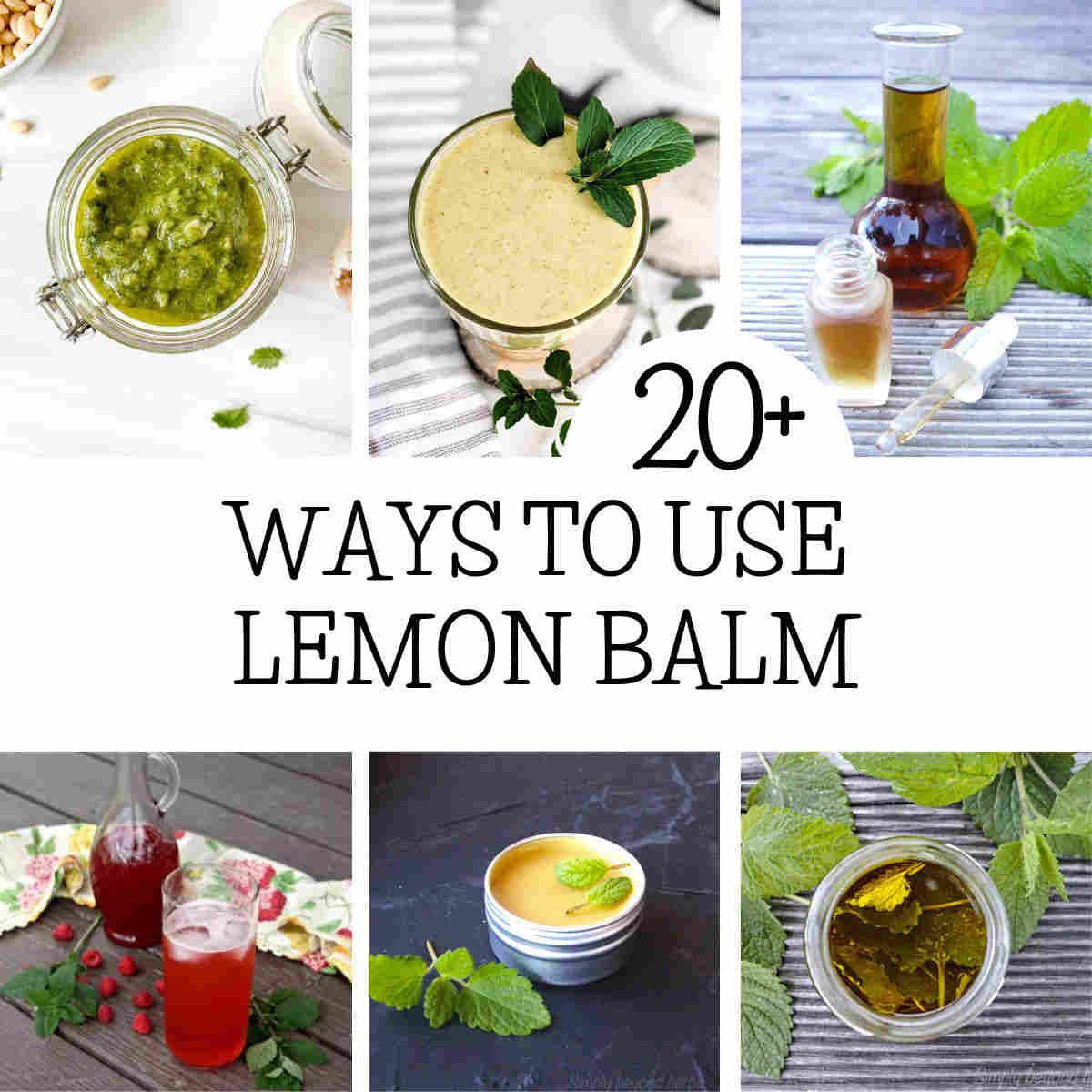
Lemon Balm Recipes for Frozen Treats:
Since lemon balm is at its best during the heat of the summer, lemon balm ice cream or lemon balm sorbet makes for a lovely way to enjoy the essence of this herb. There are so many directions you could take a lemon balm ice cream, and many recipes combine the fresh herbs with summer fruits.
Here are a few Lemon Balm Ice Cream recipes to get you started:
Lemon Balm Ice Cream with Egg Yolk Custard Base ~ Nutmegs, seven
Lemon Balm Ice Cream (no eggs) ~ Autumn Makes and Does
Lemon Balm and Crème Fraîche Ice Cream ~ The Bojon Gourmet
Lemon Meringue Ice Cream with Lemon Balm ~ BBC Food
Roasted Blueberry and Lemon Balm Ice Cream ~ Hungry Scribbler
Buttermilk Lemon Balm Ice Cream ~ Out Of The Ordinary Food
Creamy Lemon Balm Gelato ~ Honest Food
Here are a couple dairy-free, raw and vegan options as well:
Vegan No-Churn Lemon Balm Ice Cream ~ One Green Planet
Honey Sweetened Lemon Balm Granita ~ The Nourishing Gourmet
Given that it’s a busy time of year, it may actually be simpler to skip the ice cream maker all together and make a batch of simple herbal popsicles like these lavender lemon balm herbal popsicles.
Baked Goods Using Lemon Balm
Lemon Balm Cookies ~ Farm Flavor
Lemon Balm Poppy Seed Cookies ~ Homespun Seasonal Living
Lemon Balm Shortbread ~ PBS
Lemon Balm Bundt Cake ~ Magnolia Days
Lemon Balm Lavender Scones ~ The Herbal Academy
Lemon Balm Drop Biscuits ~ Homespun Seasonal Living
Simple Refreshing Lemon Balm Drink Recipes
If you’re going back out to work in the garden, it’s best to keep summer drinks cold, simple and non-alcoholic. All of these lemon balm drinks fit the bill…
Honey & Lemon Balm Spritzer ~ She Wears Many Hats
Lemon Balm Infused Lemonade ~ Simple Bites
Lemon Balm Ice Tea ~ Learning and Yearning
Lemon Balm Blueberry Smoothie ~ Healthy Slow Cooking
Probiotic, Cultured or Home Brewed Lemon Balm Drinks
Blueberry Lemon Balm Kombucha ~ Kombucha Hunter
Motherwort & Lemon Balm Mead (or ale) ~ Pixie’s Pocket
Lemon Balm Mead ~ Practical Self Reliance
Raspberry Lemon Balm Shrub ~ Homespun Seasonal Living
Lemon Balm Boozy Creations:
Carmelite nuns developed an aromatic cordial in the 14th century made from infusing lemon balm leaves, lemon peel, nutmeg, and angelica root in alcohol. This concoction was very popular with reducing headaches and was also used as a perfume.
Chartreuse and Benedictine liqueurs are still around today and are said to have healing properties. Can you guess what one of the main ingredients is?
Here is a fun recipe for Lemon Balm Mead I have tried and really liked it a lot
https://practicalselfreliance.com/lemon-balm-mead/
Other alcohol based lemon balm recipes:
The Beekeepers Balm Cocktail ~ The Kitchn
Lemon Balm Martini ~ The Farmhouse Project
Lemon Balm Honeysuckle ~ Bon Appetit
Apricot Mojito with Lemon Balm ~ Food & Style
Lemon Balm Julep ~ Galumbi Drinks & More
Blackberry Jammin Gin Cocktail with Lemon Balm ~ Southern Fatty
Lemon balm contains a class of chemicals known as terpenes (notably citronellal), which are also present in citrus fruits and conifers (notably juniper), so it has a perfect affinity with gin. It also contains tannins, and eugenol, which is responsible for giving wood avens roots their clove-like aromatic resonance.
This combination of heady and easy-to-infuse aromatics lend themselves incredibly well to boozy concoctions. A mere sprig in gin and tonic adds all the lemon waft you need without the air miles. Muddle the leaves, perhaps with a little sorrel, for mojitos (or mojintos). It is also great for making botanical champagne, and is a natural partner for elderflowers which are at their height just as lemon balm gets near its summer best. I often add it to my home made vermouths. Perhaps best of all is to make it into a shrub.
Here is a rundown of how Mark Williams of Galloway Wild Foods likes to work with it in the kitchen/bar, with brief instructions:
Raw – Scatter in salad, on puddings or as a garnish.
Syrup – infuse into a 1:1 sugar:water syrup by gently heating. Don’t boil. Cool in sterilised jars. Keeps in fridge for a couple of weeks. Pour on puddings. A great cocktail ingredient.
Cordial – add lemon juice, crab apple juice, citric acid or the infused vinegar described below, to your syrup, to taste. This improves its keeping qualities and adds a pleasing sharpness. Drink as diluting cordial. Makes a great gimlet.
Jelly – Once you’ve made a syrup or cordial, this can be used to make flavoured jelly.
Vinegar – All mints love to pour their flavour into vinegar. Infuse leaves straight into cold apple cider vinegar. Leave a week. Strain. Use in salad dressings, or as a base for a pickling liquor.
Shrub – Mix your lemon balm vinegar with your lemon balm cordial or syrup, to make a shrub. Or return it to its bee roots by mixing it with honey to make an oxymel. These are great for giving gentle acidity and structure to cocktails.
Liqueur – Infuse into vodka for no more than 3 days. Strain. Blend with cordial/syrup/shrub to taste, to make a liqueur. Add to gin!
Champagne – you just need water, sugar and a bit of vinegar. See my recipe for elderflower champagne here, and just sub in, or embellish with, lemon balm leaves. A fabulous mixer for gin
Savory Lemon Balm Recipes
Lemon Balm Pesto ~ Vintage Kitty
Lemon Balm Curry - from www.veganfoodandliving.com
Summer Lemon Balm Chicken ~ A Musing Foodie
Lemon Balm Zucchini Soup ~ Jasmin Cook Book
Extra Special Potatoes with Lemon Balm from www.studiobotanica.com
Lemon Balm Marinade and Salad Dressing - from www.fragroplants.com
Dried Lemon Balm Recipes
Beyond fresh in season uses for lemon balm, you always have the option to dry lemon balm for use in the winter time. Once temps aren’t so summery, lemon balm makes a tasty hot herbal tea. It’s commonly used in mixtures for cold and flu, as well as gentle relaxation blends.
Relaxation Herbal Tea Mix with Lemon Balm ~ Healing Harvest Homestead
Ginger, Lemon Balm Green Tea Blend ~ Homespun Seasonal Living
Other Lemon Balm Uses
As noted above this plant is not only delicious but highly medicinal. Here are a few ways to incorporate lemon balm into your natural health and wellness regimen.
Herbal No Bug Balm (With Lemon Balm) ~ Grow Forage Cook Ferment
Lemon Balm Bug Spray ~ The Nerdy Farm Wife
Lemon Balm Soap ~ The Nerdy Farm Wife
Cold Sore Salve ~ Healing Harvest Homestead
Ginger & Lemon Balm Syrup for Colds & Flu ~ The Nerdy Farm Wife
Nerve Soothing Migraine Tincture ~ Healing Harvest Homestead
References and sources:
- https://pfaf.org/user/Plant.aspx?LatinName=Melissa+officinalis
- https://practicalplants.org/wiki/melissa_officinalis/
- https://thenaturopathicherbalist.com/2015/09/13/melissa-officinalis/
- https://permacultureplants.com/plants/lemon-balm/
- https://practicalselfreliance.com/lemon-balm-uses/
- https://www.growforagecookferment.com/lemon-balm-recipes/
- https://pubmed.ncbi.nlm.nih.gov/15272110/
- https://www.mdpi.com/2072-6643/6/11/4805/htm
- https://www.sciencedirect.com/science/article/abs/pii/S0944711306000250?via%3Dihub
- https://www.researchgate.net/publication/7144806_Lemon_balm_Melissa_officinalis_L_an_evidence-based_systematic_review_by_the_Natural_Standard_Research_Collaboration
- http://www.isca.in/IJBS/Archive/v2/i12/15.ISCA-IRJBS-2013-166.pdf
- https://core.ac.uk/download/pdf/83572987.pdf
- https://pubmed.ncbi.nlm.nih.gov/15142347/
- https://www.ncbi.nlm.nih.gov/pmc/articles/PMC7178502/
- https://www.ncbi.nlm.nih.gov/pmc/articles/PMC7745433/
-https://www.researchgate.net/publication/285581177_LEMON_BALM_MELISSA_OFFICINALIS_L_AN_HERBAL_MEDICINAL_PLANT_WITH_BROAD_THERAPEUTIC_USES_AND_CULTIVATION_PRACTICES_A_REVIEW
- https://greenmedinfo.com/gmi-search?text=Melissa%20officinalis
- https://www.acornherbschool.com/lemon-balm
- https://www.mountsinai.org/health-library/herb/lemon-balm
- Bennett, Robin Rose. The Gift of Healing Herbs. Berkeley: North Atlantic Books, 2014.
- Bergner, Paul. Folk Remedies Database. Boulder: Bergner Communications. 2001.
- Chevallier, Andrew. Encyclopedia of Herbal Medicine. New York: DK Publishing, 2016.
- Easley, Thomas., Horne, Steven. The Modern Herbal Dispensatory: A Medicine Making Guide. Berkeley: North Atlantic Books, 2016.
- Grieve, M. (Maud). A Modern Herbal. New York: Harcourt, Brace & Company, 1931.
- Hoffmann, David. The New Holistic Herbal. New York: Barnes & Noble, Inc., 1990.
- Tierra, Michael. The Way of Herbs. New York: Pocket Books, 1998.
- Tilgner, Dr. Sharol Marie. Herbal Medicine from the Heart of the Earth. Pleasant Hill: Wise Acres LLC, 2020.
- https://www.herbsociety.org/file_download/inline/d7d790e9-c19e-4a40-93b0-8f4b45a644f1
- https://www.herballegacy.com/Morrison_History.html
- http://humanities.mq.edu.au/acans/ephesus/chapters/chapter01.htm
- http://medherb.com/Materia_Medica/Melissa_-_Topical_Treatment_for_Herpes_Simplex_Virus.htm
- Ghaffariyan S, Mohammadi SA, Aharizad S. DNA isolation protocol for the medicinal plant lemon balm (Melissa ofiicinalis, Lamiaceae). Genet Mol Res. 2012;11(2):1049-57.
- Gruenwald J, Brendler T, Jaenicke C. PDR for Herbal Medicines. 4th ed. Montvalie, NJ: Thomson Healthcare; 2007:514-515.
- Gutierrez J, Rodriguez G, Barry-Ryan C, Bourke P. Efficacy of plant essential oils against foodborne pathogens and spoilage bacteria associated with ready to eat vegetables: antimicrobial and sensory screening. J Food Proct. 2008;71(9):1846-54.
- Hncianu M, Aprotosoaie AC, Gille E, Poiat A, Tuchilu C, Spac A, Stnescu U. Chemical composition and in vitro antimicrobial activity of essential oil Melissa officinalis L. from Romania. Rev Med Chir Soc Med Nat Iasi. 2008;112(3):843-7.
- Kennedy DO, Little W, Haskell CF, Scholey AB. Anxiolytic effects of a combination of Melissa officinalis and Valeriana officinalis during laboratory induced stress. Phytother Res. 2006;20(2):96-102.
- Kennedy DO, Scholey AB, Tildesley NT, Perry EK, Wesnes KA. Attenuation of laboratory-induced stress in humans after acute administration of Melissa officinalis (Lemon Balm). Psychosom Med. 2004 Jul-Aug;66(4):607-13.
- Kennedy DO, Wake G, Savelev S, et al., Modulation of mood and cognitive performance following acute administration of single doses of Melissa officinalis (Lemon balm) with human CNS nicotinic and muscarinic receptor-binding properties. Neuropsychopharmacology. 2003;28(10):1871-81.
- LaValle JB, Krinsky DL, Hawkins EB, et al. Natural Therapeutics Pocket Guide. Hudson, OH: LexiComp; 2000:469.
- Madisch A, Melderis H, Mayr G, Sassin I, Hotz J. A plant extract and its modified preparation in functional dyspepsia. Results of a double-blind placebo controlled comparative study. [German]. Z Gastroenterol. 2001;39(7):511-517.
- Mantle D, Pickering AT, Perry AK. Medicinal plant extracts for the treatment of dementia: a review of their pharmacology, efficacy and tolerability. CNS Drugs. 2000;13:201-213.
- Mazzanti G, Battinelli L, Pompeo C, Serrilli AM, Rossi R, Sauzullo I, et al. Inhibitory activity of Melissa officinalis L. extract on Herpes simplex virus type 2 replication. Nat Prod Res. 2008;22(16):1433-40.
- Muller SF, Klement S. A combination of valerian and lemon balm is effective in the treatment of restlessness and dyssomnia in children. Phytomedicine. 2006;13(6):383-7.
- Nolkemper S, Reichling J, Stintzing FC, Carle R, Schnitzler P. Antiviral Effect of Aqueous Extracts from Species of the Lamiaceae Family against Herpes simplex Virus Type 1 and Type 2 in vitro. Planta Med. 2006;72(15):1378-82.
- Patora J, Klimek B. Flavonoids from lemon balm (Melissa officinalis L., Lamiaceae). Acta Pol Pharm. 2002;59(2):139-43.
- Rotblatt M, Ziment I. Evidence-Based Herbal Medicine. Philadelphia, PA: Hanley & Belfus, Inc; 2002:249-251.
- Schnitzler P, Schuhmacher A, Astani A, Reichling J. Melissa officinalis oil affects infectivity of enveloped herpes viruses. Phytomedicine. 2008;15(9):734-40.
- Taavoni S, Mazem Ekbatani N, Haghani H. Valerian/lemon balm use for sleep disorders during menopause. Complement Ther Clin Pract. 2013;19(4):193-6.
- Triantaphyllou K, Blekas G, Boskou D. Antioxidative properties of water extracts obtained from herbs of the species Lamiaceae. Int J Food Sci Nutr. 2001;52(4):313-317.
The above post was the 11th installment of a series titled Stacking Functions in the Garden, Food Forest and Medicine Cabinet : The Regenerative Way From Seed To Apothecary.





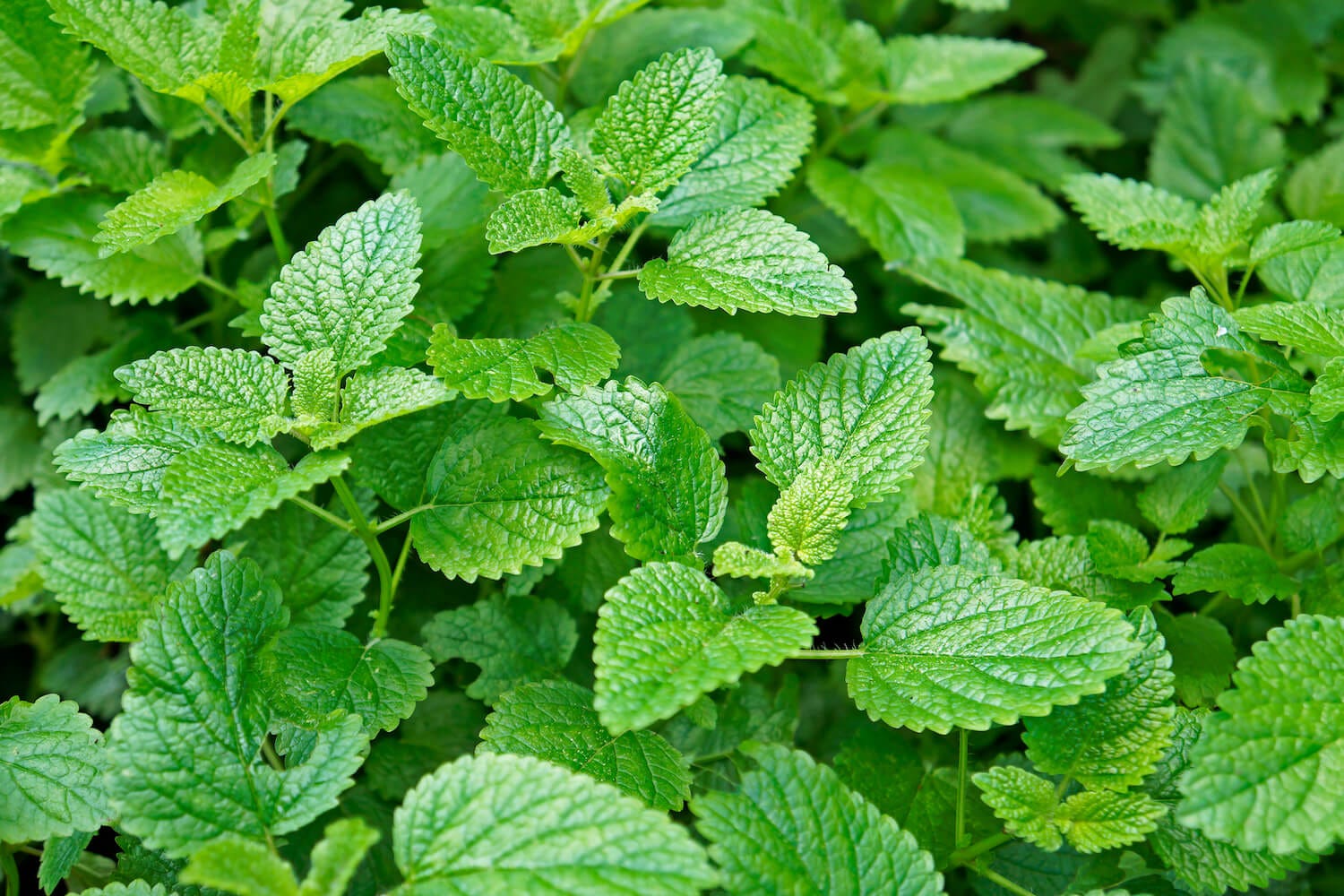
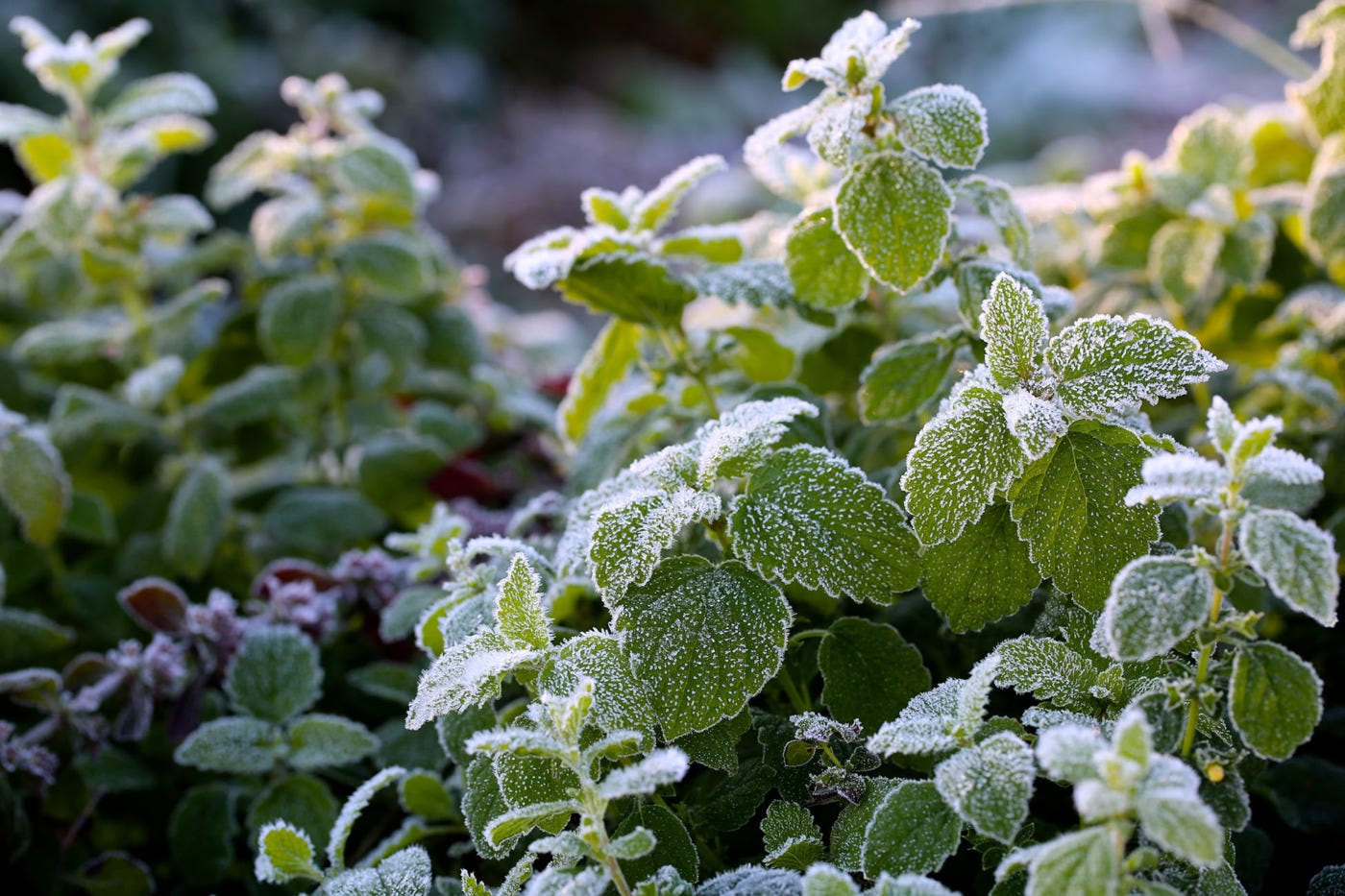
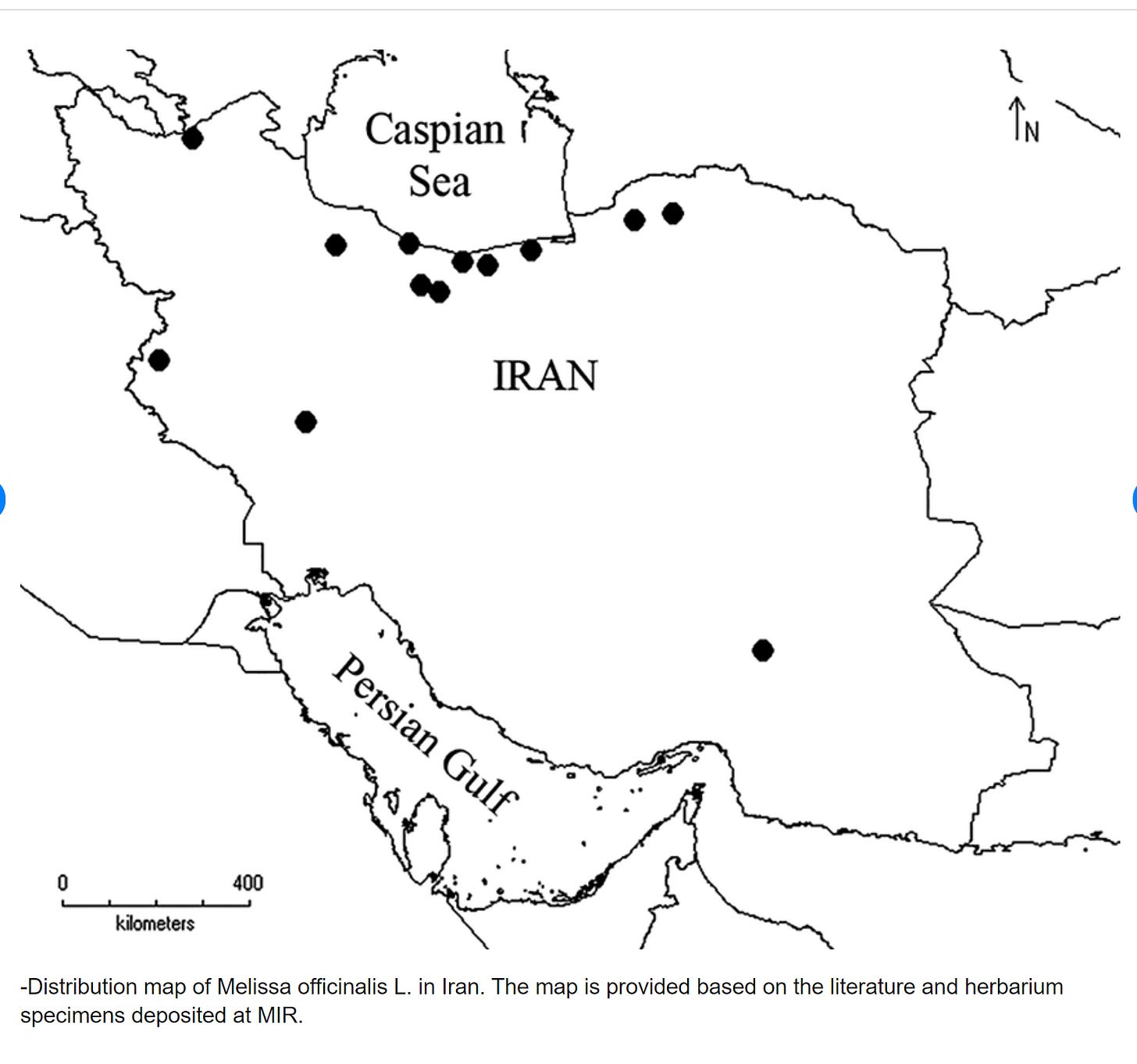
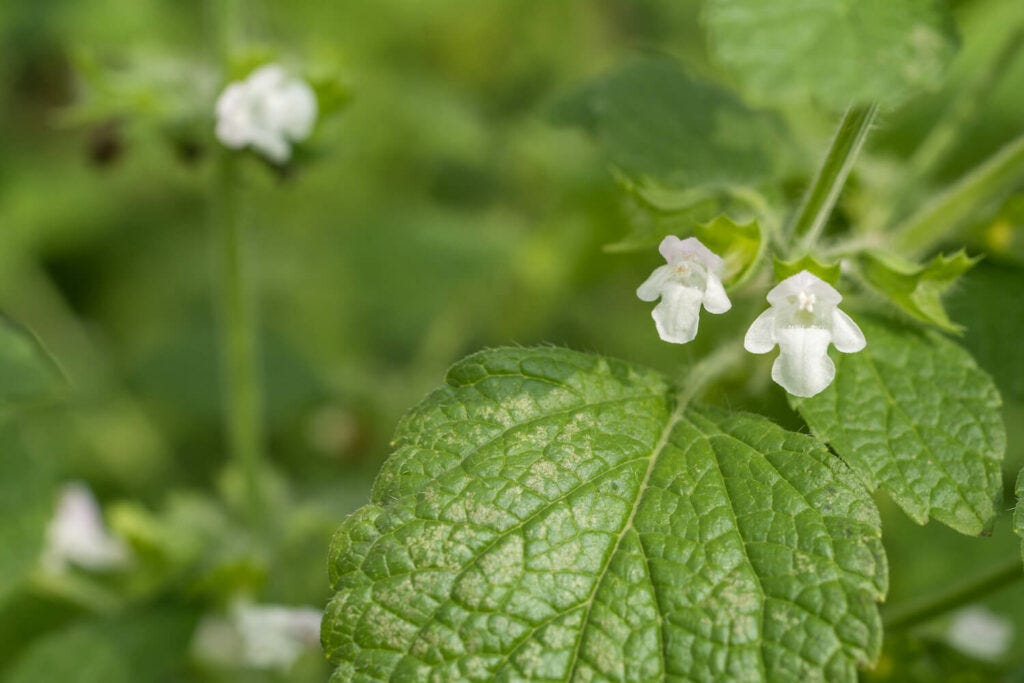

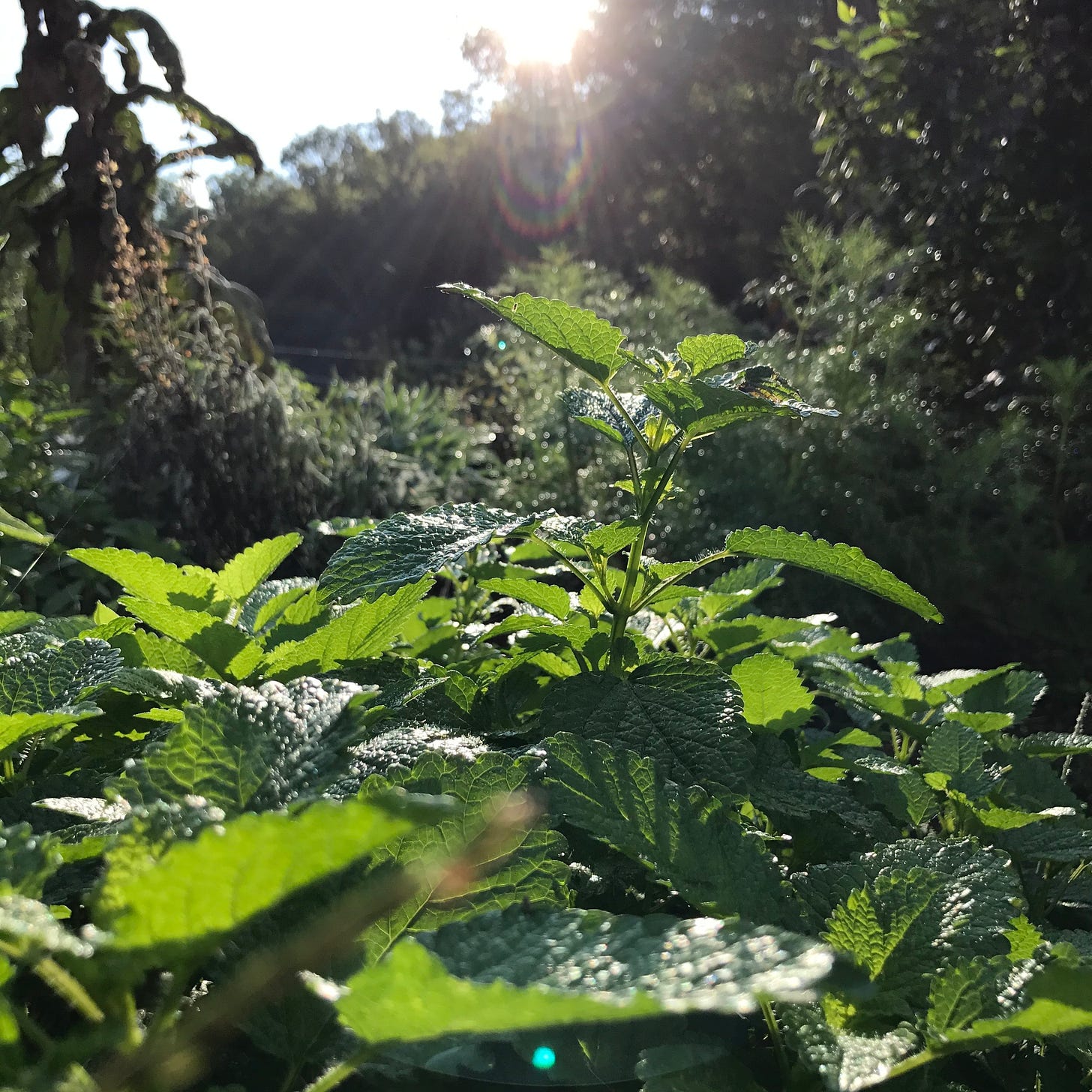
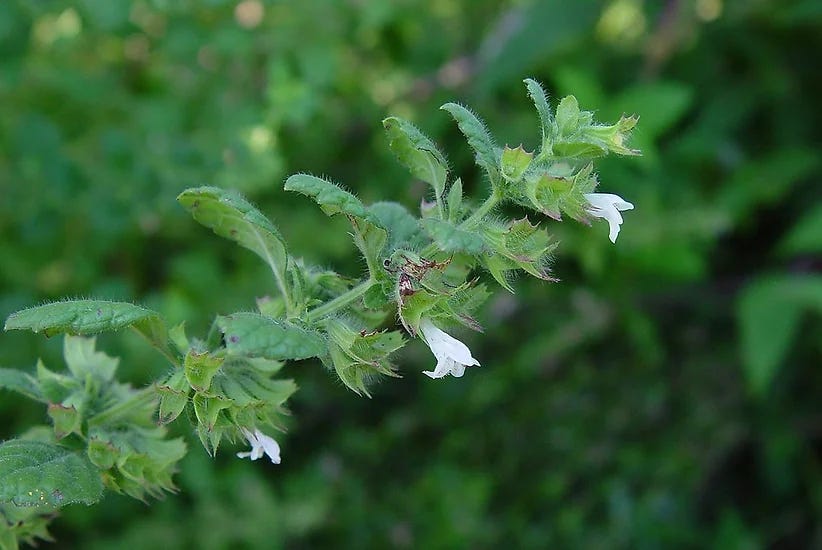
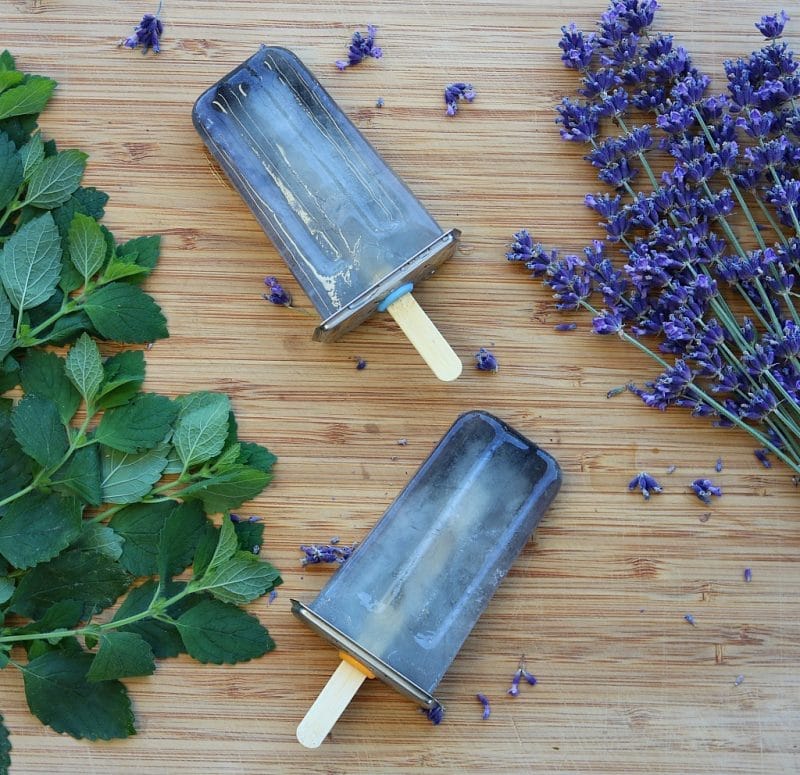
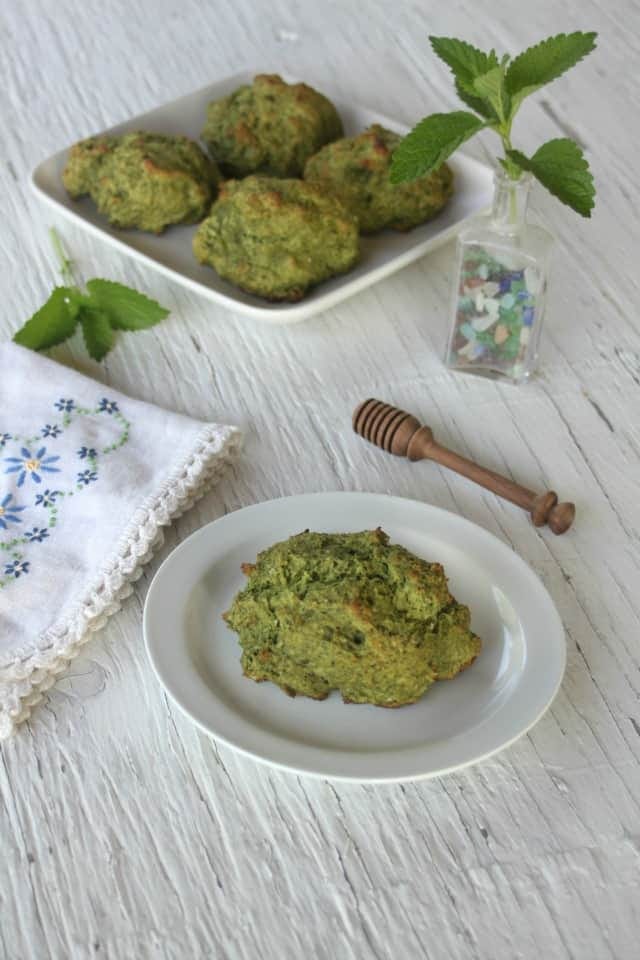
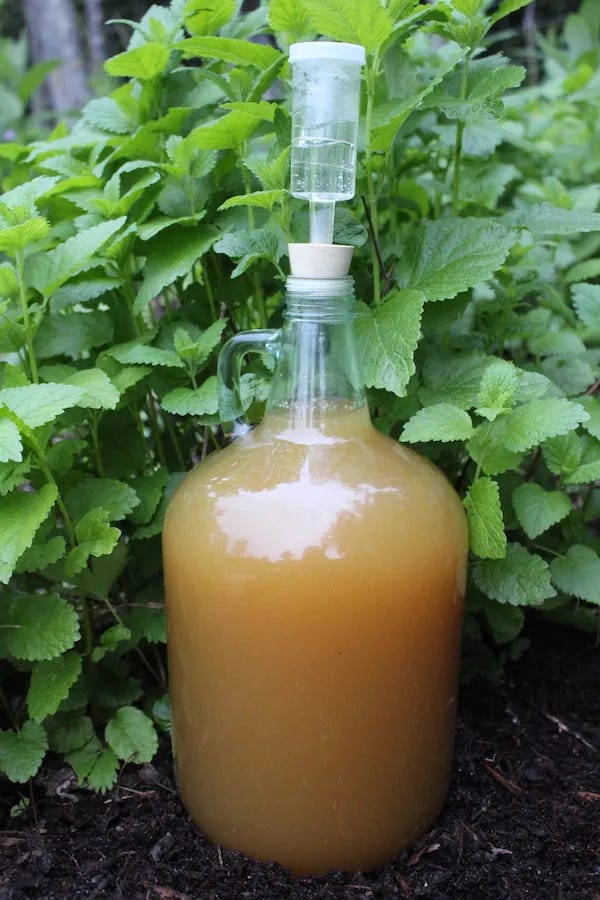
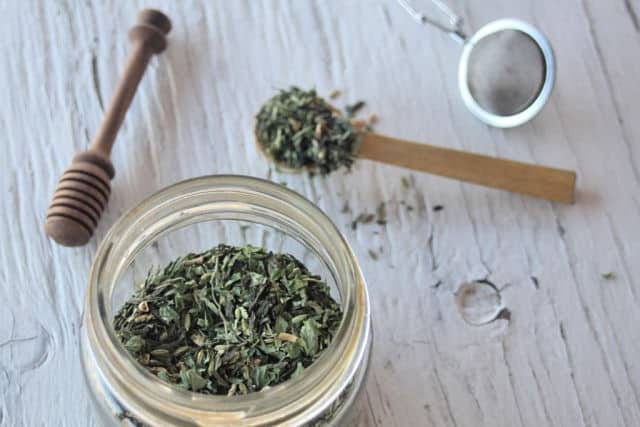
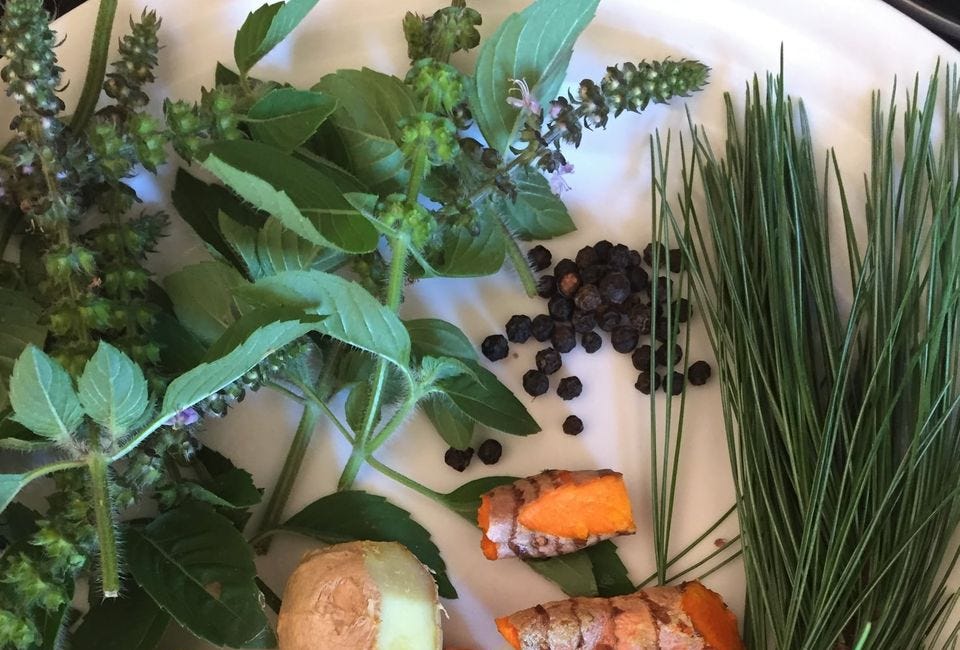
Wow! What a comprehensive collection on lemon balm! I never fail to learn something new here. Immense gratitude for sharing your knowledge and work.
xo xo